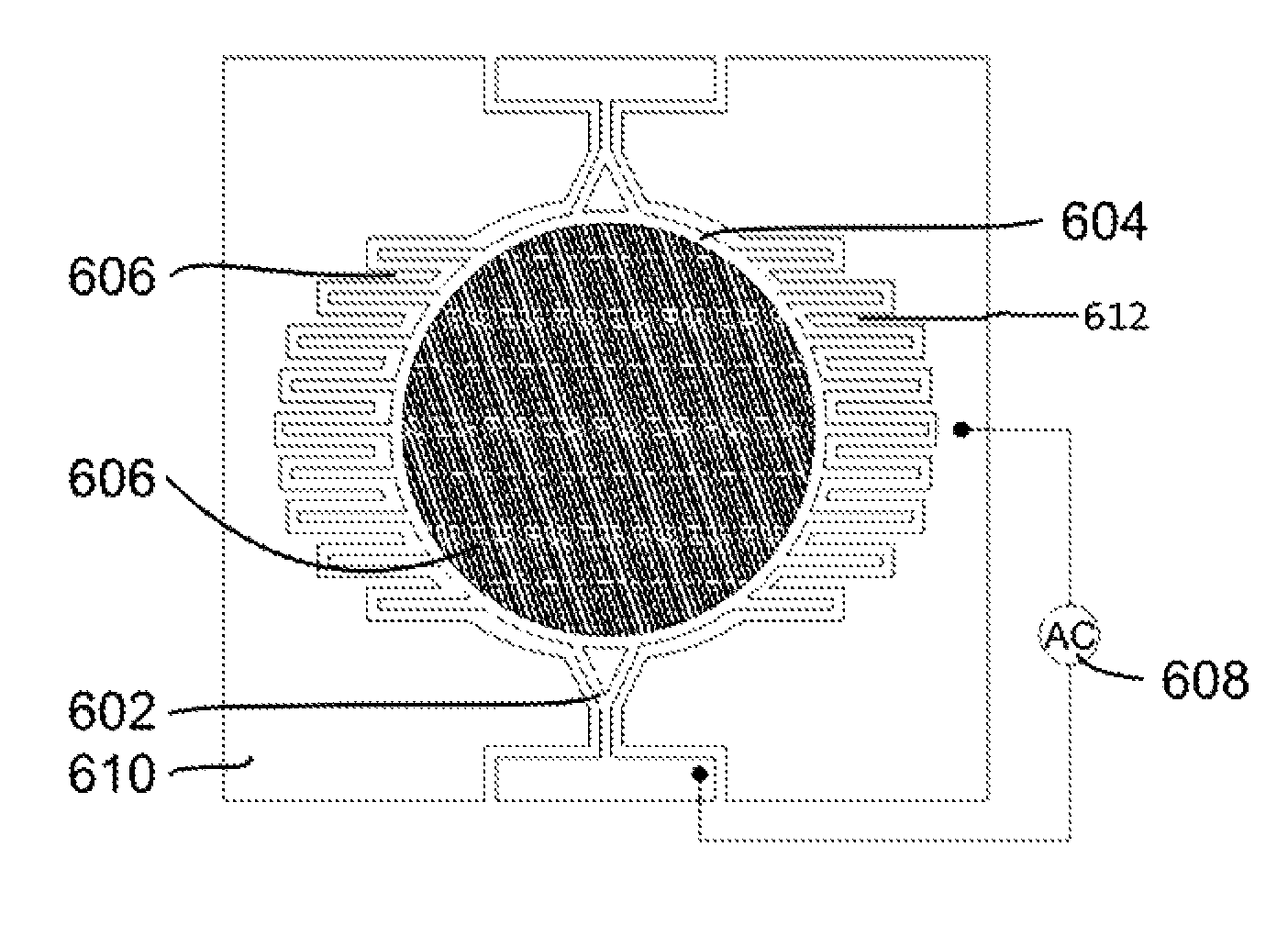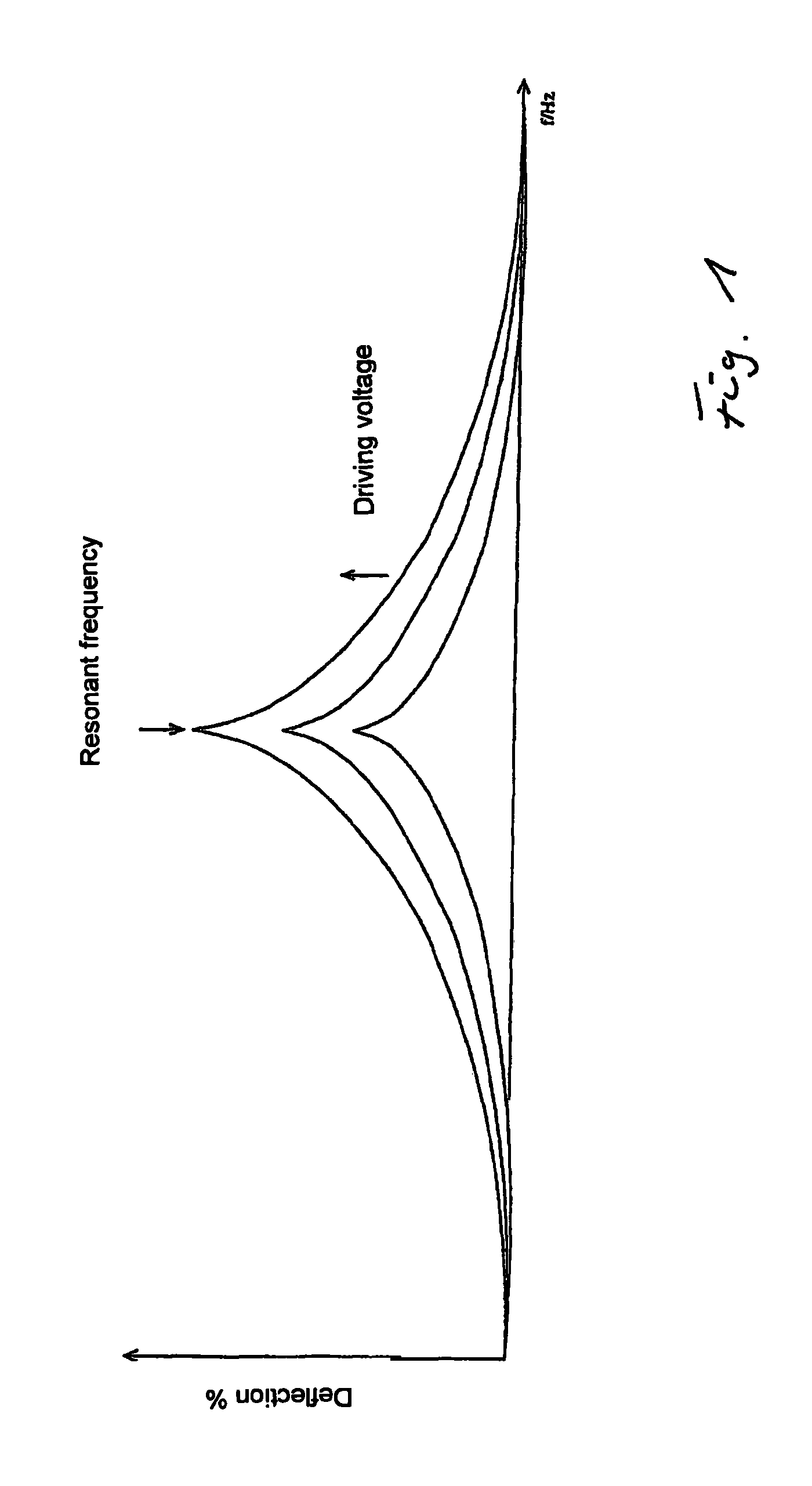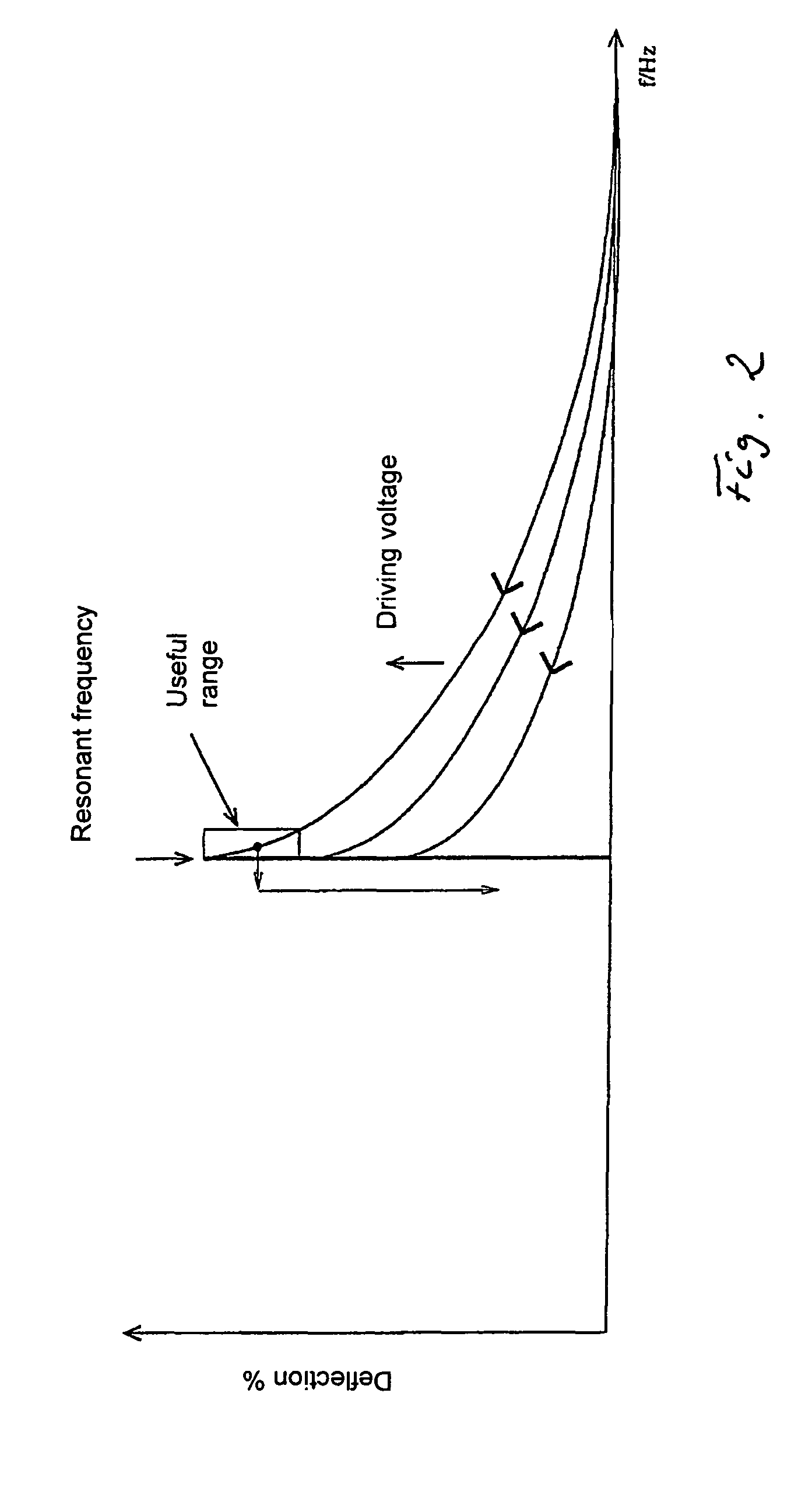Oscillating, deflectable micromechanical element and method for use thereof
a micromechanical element and oscillating technology, applied in the field of micromechanical elements, can solve the problems of further disadvantages, collapse of oscillation, and substantial increase of effort and/or cost for the control of such a deflection, and achieve the effect of increasing sensitivity and widening the useful frequency rang
- Summary
- Abstract
- Description
- Claims
- Application Information
AI Technical Summary
Benefits of technology
Problems solved by technology
Method used
Image
Examples
Embodiment Construction
[0043]Eight examples for possible embodiments of spring elements usable in the invention are thus shown in FIG. 5. A region aligned in a straight line in the direction of the longitudinal axis is shown in all of them with the exception of the example shown at the right in the lower row. The examples shown in the upper row have a fork / branching at an end face which is made in V shape or also in U shape.
[0044]The examples shown in the lower row have forks / branches at both end faces which can each also have different designs or be changed with respect to their length in the direction of the longitudinal axis.
[0045]The example shown at the far right in the lower row is formed from two forks / branchings directly connected to one another, with one being made in U shape and the other in V shape.
[0046]FIG. 6 shows a schematic diagram 600 of a micromechanical element in accordance with one or more aspects. The micromechanical element can be formed as a comb drive element 604 in accordance wit...
PUM
 Login to View More
Login to View More Abstract
Description
Claims
Application Information
 Login to View More
Login to View More - R&D
- Intellectual Property
- Life Sciences
- Materials
- Tech Scout
- Unparalleled Data Quality
- Higher Quality Content
- 60% Fewer Hallucinations
Browse by: Latest US Patents, China's latest patents, Technical Efficacy Thesaurus, Application Domain, Technology Topic, Popular Technical Reports.
© 2025 PatSnap. All rights reserved.Legal|Privacy policy|Modern Slavery Act Transparency Statement|Sitemap|About US| Contact US: help@patsnap.com



